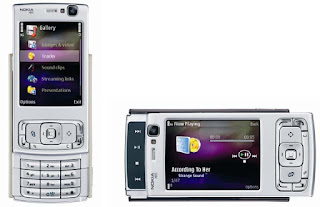Not all is in recession it seems. The handset vendor world #3, LG predicts to ship 110m phones this year, which would represent a 9% increase in volumes on a year-on-year basis (see the market shares for 2008 and Q1/2009 below; courtesy of Strategy Analytics) in the face of what it believes will be an overall flat market this year.

So whilst everyone is shrinking, LG is growing. Everyone? Ah, now, Samsung is growing, too. The victims? Seemingly Motorola and Sony Ericsson with Nokia also suffering. No news then? Well, by 2012 LG wants to be #2 and ship around 200m devices (which would be 100% more than in 2008). So 9% growth wouldn’t get them there, would it?
Joking aside. Is this surprising? I think not. LG had had a couple of very “pretty” devices out. Starting with the LG Prada, they came out with the “Shine” and had a great success with the Viewty. They have been upping their game at a time where in particular Sony Ericsson and Motorola had been struggling to compose a coherent product strategy, and this will have enhanced the overall effect.












